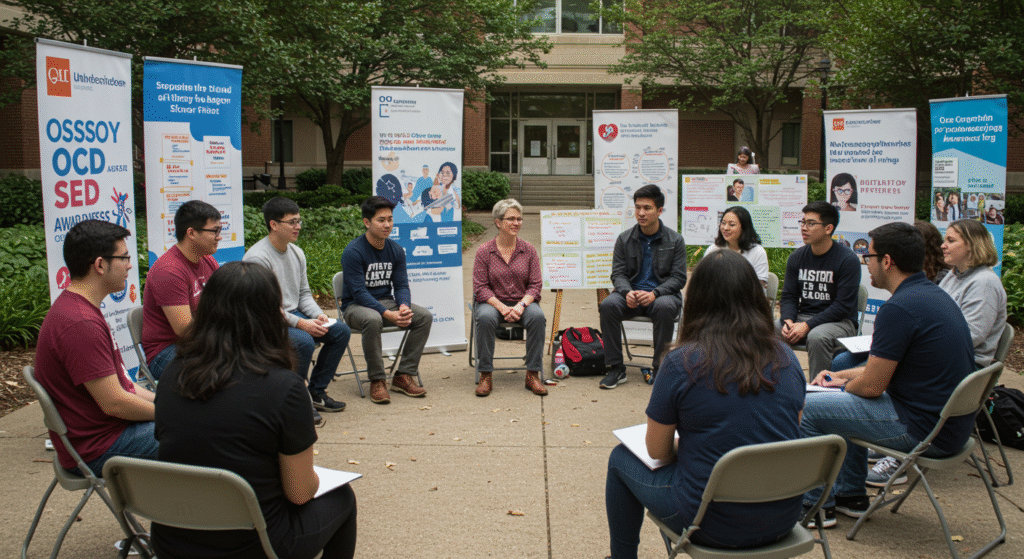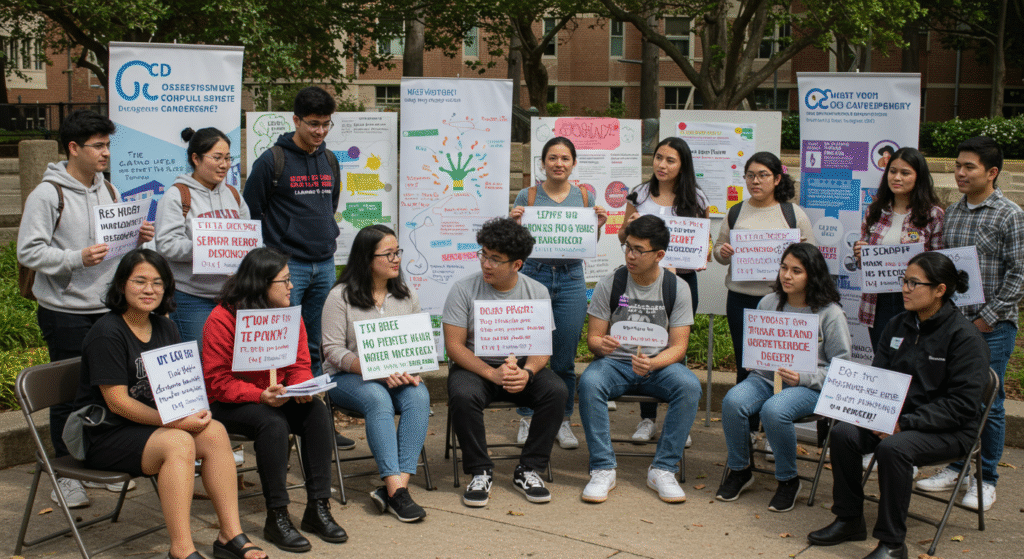🧠 Table of Contents
- Introduction: The Power of Education in Combating OCD Stigma
- Understanding OCD: Beyond the Surface
- The Role of Education in Shaping Perceptions
- Misconceptions and Their Impact
- Educational Interventions: Evidence and Effectiveness
- Real-Life Stories: The Need for Awareness
- The Importance of Language and Media Representation
- Strategies for Promoting OCD Education
- Conclusion: A Call to Action

The Power of Education in Combating OCD Stigma
Obsessive-Compulsive Disorder (OCD) is often misunderstood, leading to stigma and misconceptions. Education is pivotal in reshaping these perceptions, fostering empathy, and encouraging individuals to seek help. By understanding OCD’s complexities, society can move towards a more supportive environment for those affected.
2. Understanding OCD: Beyond the Surface
OCD is a mental health condition characterized by persistent, unwanted thoughts (obsessions) and repetitive behaviors (compulsions). It’s not merely about cleanliness or orderliness; individuals may experience distressing thoughts about harm, morality, or contamination. Recognizing the diverse manifestations of OCD is crucial in dispelling myths and fostering understanding.
3. The Role of Education in Shaping Perceptions
Education serves as a powerful tool in altering perceptions. By integrating mental health education into curricula and public awareness campaigns, societies can challenge stereotypes and promote accurate information about OCD. Educated communities are more likely to offer support and less likely to perpetuate harmful stigmas.
4. Misconceptions and Their Impact
Common misconceptions, such as equating OCD with mere quirks or personality traits, can lead to individuals feeling invalidated and reluctant to seek help. These misunderstandings can delay diagnosis and treatment, exacerbating the condition’s impact on daily life. Addressing these misconceptions through education is essential in reducing stigma.

5. Educational Interventions: Evidence and Effectiveness
Studies have shown that educational interventions can significantly improve knowledge about OCD and reduce stigmatizing attitudes. For instance, a study involving teachers demonstrated that brief educational sessions increased their understanding of OCD and its implications in the classroom, highlighting the importance of informed educators in supporting affected students.
6. Real-Life Stories: The Need for Awareness
Personal narratives are compelling tools in humanizing OCD. Sharing stories of individuals who have navigated the challenges of OCD can inspire others to seek help and foster a sense of community. These stories underscore the importance of awareness in breaking down barriers to treatment.
7. The Importance of Language and Media Representation
The language used to describe OCD and its portrayal in media significantly influences public perception. Casual use of the term “OCD” to describe a preference for orderliness trivializes the disorder and perpetuates stigma. Accurate representation in media and careful language can promote a more informed and empathetic society.

8. Strategies for Promoting OCD Education
To effectively promote OCD education, strategies may include:
- Incorporating mental health topics into school curricula.
- Launching public awareness campaigns.
- Training educators and healthcare professionals.
- Utilizing media platforms to disseminate accurate information.
These approaches can collectively contribute to a more informed and supportive environment for individuals with OCD.
9. Conclusion: A Call to Action
Breaking the stigma surrounding OCD requires concerted efforts in education, awareness, and empathy. By challenging misconceptions and promoting understanding, society can create a more inclusive environment for those affected by OCD. We must continue to educate, listen, and support, paving the way for a future where mental health is treated with the seriousness it deserves.


Leave a Reply